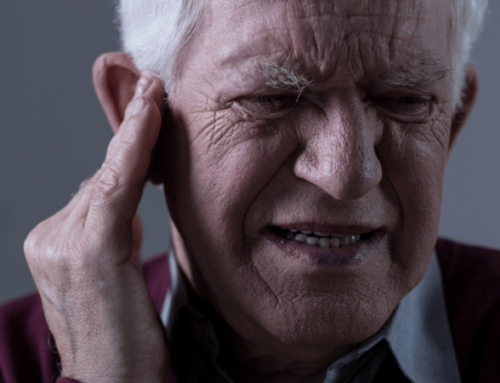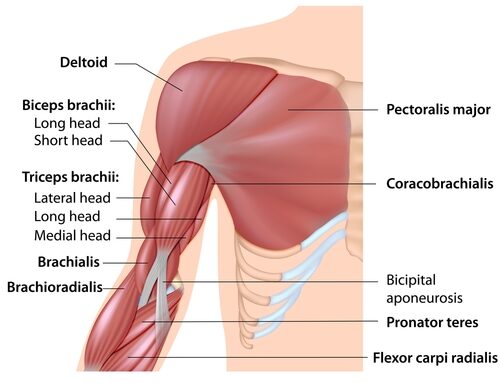Bunions are a common issue with feet, which sometimes can be excruciatingly painful and cause huge discomfort. But what is actually meant by a bunion? It is
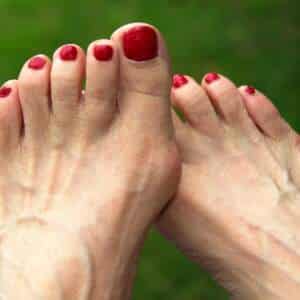 a bony bump formed on the joint at the base of the big toe; it may result from inflammation and swelling. In fact, they’re more than just a cosmetic issue; a bunion can throw off the way you stand and walk, even making it difficult to wear some kinds of shoes. The following article gives information about the etiology, symptoms, diagnosis, and possible treatment in the case of having to face this bump on the side of your foot. The good news is that bunions do not typically go away by themselves. However, with proper care from your doctor or podiatrist, they are easier to manage over time.
a bony bump formed on the joint at the base of the big toe; it may result from inflammation and swelling. In fact, they’re more than just a cosmetic issue; a bunion can throw off the way you stand and walk, even making it difficult to wear some kinds of shoes. The following article gives information about the etiology, symptoms, diagnosis, and possible treatment in the case of having to face this bump on the side of your foot. The good news is that bunions do not typically go away by themselves. However, with proper care from your doctor or podiatrist, they are easier to manage over time.
Understanding the kind of treatment available for bunion ensures that you make the best decision on what course of action needs to be undertaken. Stick with us and learn how you can reduce pain and get back to living life to its fullest with proper bunion treatment!
What Are Bunions?
A bunion is a deviation at the base of the big toe, also known as hallux valgus. It results from the deviation of the first phalanx and can be very painful, leading to a lot of discomfort in the foot and ankle. The joint capsule is stretched, and an increased angle forms between the first two toes. Calluses may form over the protrusion. A smaller version of the same problem at the base of the pinky toe is common and termed a tailor’s bunion or bunionette.
Who Gets Bunions
This is important in that the patient can know those who are most predisposed to developing bunions, which helps them be able to take measures in advance. While anyone can get a bunion, some people are more vulnerable than others. Women get them ten times more than men. This is because wearing high heels or narrow shoes, which are also undersized for them, exposes one to the risk of getting them. Flat-footedness even predisposes one to developing a bony bump due to the misalignment of the bones. All this results from some genetic predisposition in some people, which causes them to have weakness at the toe joints. So, it does not matter if one wears or does not wear the wrong shoes.
Etiology: What Causes a Bunion
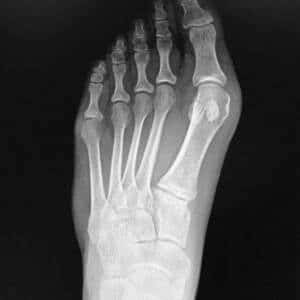
Several factors can lead to a bunion condition. With flat feet or high arches, most of the pressure will be squeezed onto particular areas of the feet in mechanics. This may culminate in bunions over a period of time. A shortened Achilles tendon will, of course, restrict ankle flexion and, in so doing, transmit forces via the toes. The head of the first metatarsal affects the surety of the metatarsophalangeal joint: the rounder the head, the less stable the joint. So, if any of these four muscles are tight, an imbalance will result in the joint when those muscles cross.
Furthermore, narrow shoes or of the wrong size usually put extra pressure on toes due to their narrow toe boxes, slowly encouraging the misalignment of the big toe joint over time. Lastly, the activity level is a major factor. Those who take part in physical activities that involve foot misuse stand at higher chances of developing bunions than those not engaging in physical exercises or moving around.
Signs And Symptoms of Bunions
A bunion is a bony lump forming on the side of the bottom of the great toe. Bunion pain is most often caused by bursitis, which is inflammation of the bursa that forms. Bunions cause swelling, redness, and/or difficulty moving the big toe. People will also notice the big toe angling in toward the second toe. The deformity can also irritate pressure and friction created by shoes on the swelling, thereby forming calluses or corns on the swelling. People with bunions usually feel increased discomfort if their shoes are tight and narrower than their feet.
Bunions are more common in women than in men, but they may affect anyone. Diagnosing a bunion may involve examining the patient’s foot while standing or moving around. X-rays are often used to evaluate the seriousness of the condition, in addition to any other associated diseases, such as arthritis. [Bunions Vs. Mortons Toe]
Bunion Treatment
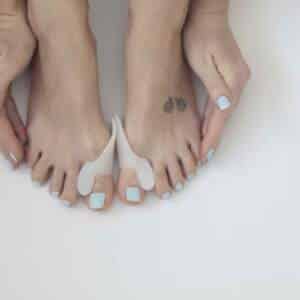
That said, treatment—the signs and symptoms of bunions was a discussion—thus follows. Most nonsurgical treatments focus on reducing pain and inflammation while preventing or correcting changes in the foot’s structure over time. The American College of Foot and Ankle Orthopedics and Medicine advises the use of toe spacers or a splint between your big toe and second toe to reduce the pressure caused by the big toe. In addition, one is supposed to put on properly fitting shoes that have enough space for the toes not to squeeze. Wearing properly fitting shoes that have enough room left for the toes is important so as not to aggravate the condition. One should wear shoes that would cushion the effect of the discomfort on your feet. Sometimes, the administration of ibuprofen or other non-steroidal anti-inflammatory drugs can be given for symptomatic relief.
Some of the other ways of treatment are exercise and massage. Range of motion stretches, traction, and friction around the area are good to do in small doses for pain, but they will not permanently realign the toe. Elevating an inflamed and painful foot can help, as well as having a corticosteroid shot around the bunion. If the damage goes further, and the pain becomes very serious, you may need surgery. This is called a bunionectomy; it will be done to reshape the bones and joints in your foot.
Is Massage Good For Bunions?
For some individuals, massage therapy may be considered as a way to reduce the symptoms associated with bunion deformity. Other than reducing the pain and swelling, tension on the bunion is also reduced, and mobility is increased by massaging the tight muscles and tendons around the bunion. Anyway, they should know that serious cases wouldn’t indulge in massaging the bunion because it could worsen the levels of pain or an existing deformity.
A good massage therapist would consider your current comfort level before exasperating any underlying conditions or at least not making them feel any worse than they did at the start of the massage. In addition to massage therapy, treatment with orthotics, drugs, rest, and ice packs may be recommended for relief of symptoms associated with this issue while helping to avoid further complications from developing in the future.
Lymphatic drainage is the most supportive type of massage during a flare-up, while others that are very good but do not direct to the most affected area include deep tissue massage, Swedish massage, and trigger point therapy.
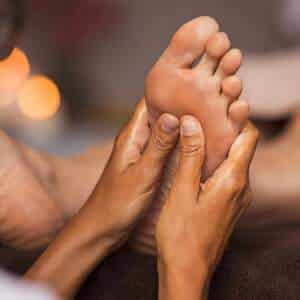
Conclusion
Bunions are very painful and can result from wearing different types of shoes; women are more likely to get them from pointed shoes or those with a high heel that puts pressure on the bone structure in their feet.
Thank goodness some exercises can help prevent bunions from forming. Bunions appear to have a hereditary tendency; get checked immediately when you detect the least sign or symptom.
Bunions could result in unbearable pain and discomfort; doctors normally recommend corrective surgery. The period that one would take to recover from the surgery fully will, on the other hand, highly depend on the procedures that one has been taken through. But generally, it may take a maximum of 6 weeks before walking and other normal activities can be carried out without pain. Should you experience any soreness due to the formation of a bunion, you had better have it checked by a healthcare provider. Early interventions could save you a lot of bother later! [9 Reasons Your Feet May Hurt]
If you’re experiencing any discomfort due to bunion formation, then it might be worth getting checked out by a medical professional. Taking steps early could save you a lot of hassle down the line! Call us to schedule your massage! 614-604-6358



